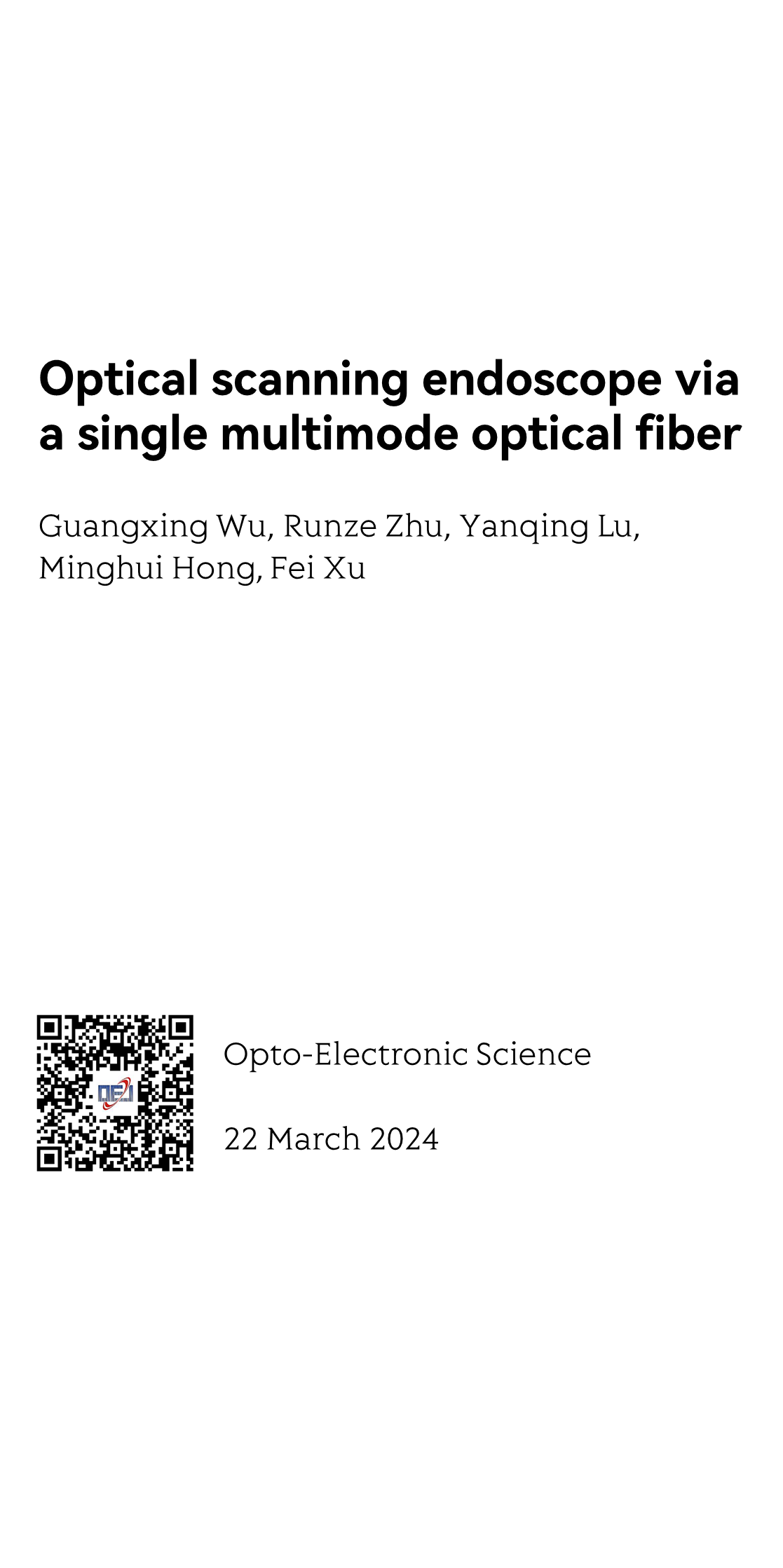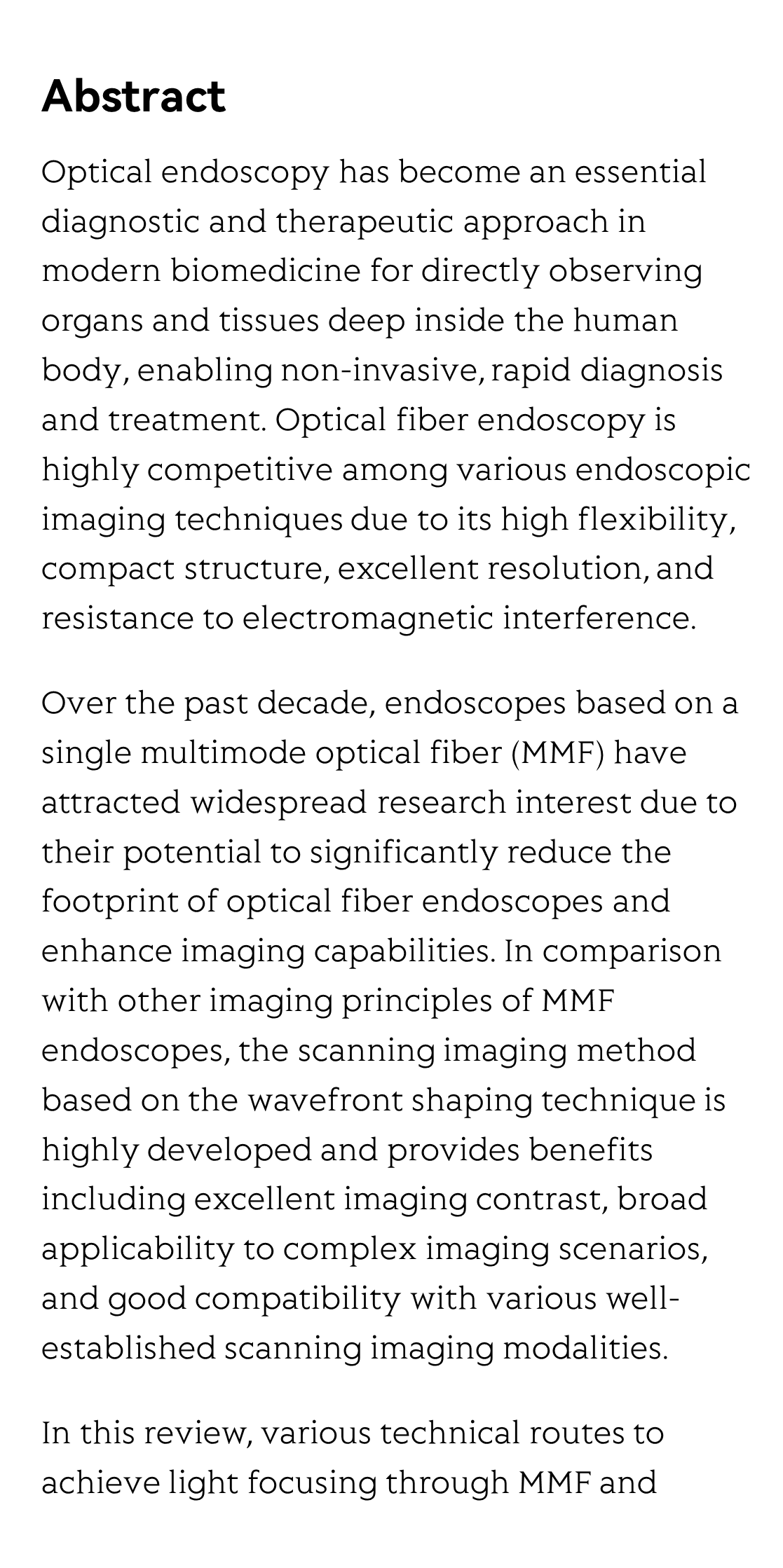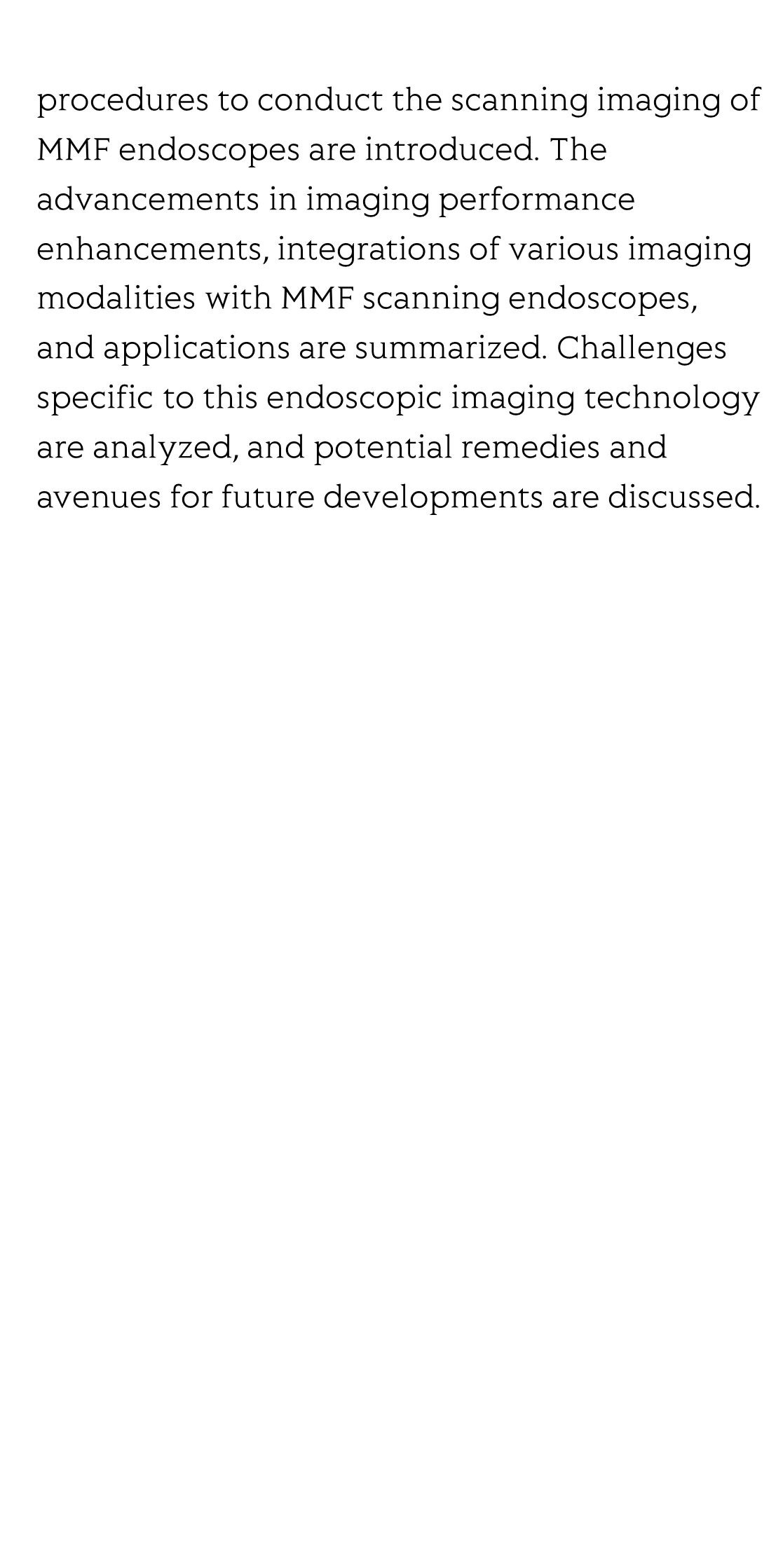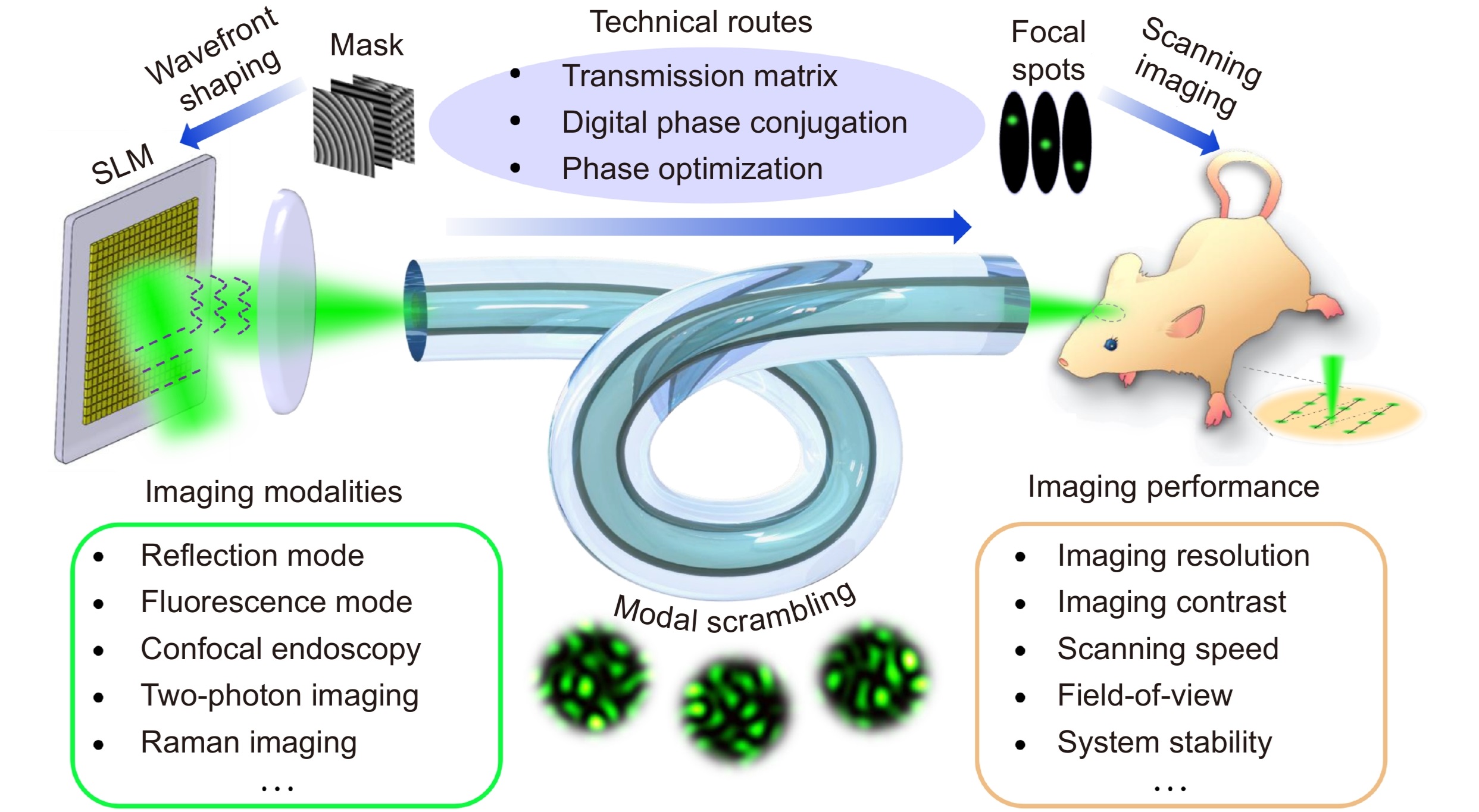(Peer-Reviewed) Optical scanning endoscope via a single multimode optical fiber
Guangxing Wu 吴光兴 ¹ ², Runze Zhu 朱润泽 ², Yanqing Lu 卢延庆 ², Minghui Hong 洪明辉 ³, Fei Xu 徐飞 ²
¹ Department of Electrical and Computer Engineering, National University of Singapore, 4 Engineering Drive 3, 117576, Singapore
² College of Engineering and Applied Sciences and Collaborative Innovation Center of Advanced Microstructures, Nanjing University, Nanjing 210023, China
中国 南京 南京大学 现代工程与应用科学学院 人工微结构科学与技术协同创新中心
³ Pen-Tung Sah Institute of Micro-Nano Science and Technology, Xiamen University, 33 Qunxian Road, Xiamen 361005, China
中国 厦门 厦门大学 萨本栋微纳米研究院
Opto-Electronic Science
, 2024-03-22
Abstract
Optical endoscopy has become an essential diagnostic and therapeutic approach in modern biomedicine for directly observing organs and tissues deep inside the human body, enabling non-invasive, rapid diagnosis and treatment. Optical fiber endoscopy is highly competitive among various endoscopic imaging techniques due to its high flexibility, compact structure, excellent resolution, and resistance to electromagnetic interference.
Over the past decade, endoscopes based on a single multimode optical fiber (MMF) have attracted widespread research interest due to their potential to significantly reduce the footprint of optical fiber endoscopes and enhance imaging capabilities. In comparison with other imaging principles of MMF endoscopes, the scanning imaging method based on the wavefront shaping technique is highly developed and provides benefits including excellent imaging contrast, broad applicability to complex imaging scenarios, and good compatibility with various well-established scanning imaging modalities.
In this review, various technical routes to achieve light focusing through MMF and procedures to conduct the scanning imaging of MMF endoscopes are introduced. The advancements in imaging performance enhancements, integrations of various imaging modalities with MMF scanning endoscopes, and applications are summarized. Challenges specific to this endoscopic imaging technology are analyzed, and potential remedies and avenues for future developments are discussed.
Review for wireless communication technology based on digital encoding metasurfaces
Haojie Zhan, Manna Gu, Ying Tian, Huizhen Feng, Mingmin Zhu, Haomiao Zhou, Yongxing Jin, Ying Tang, Chenxia Li, Bo Fang, Zhi Hong, Xufeng Jing, Le Wang
Opto-Electronic Advances
2025-07-17
Multiphoton intravital microscopy in small animals of long-term mitochondrial dynamics based on super‐resolution radial fluctuations
Saeed Bohlooli Darian, Jeongmin Oh, Bjorn Paulson, Minju Cho, Globinna Kim, Eunyoung Tak, Inki Kim, Chan-Gi Pack, Jung-Man Namgoong, In-Jeoung Baek, Jun Ki Kim
Opto-Electronic Advances
2025-07-17
Non-volatile tunable multispectral compatible infrared camouflage based on the infrared radiation characteristics of Rosaceae plants
Xin Li, Xinye Liao, Junxiang Zeng, Zao Yi, Xin He, Jiagui Wu, Huan Chen, Zhaojian Zhang, Yang Yu, Zhengfu Zhang, Sha Huang, Junbo Yang
Opto-Electronic Advances
2025-07-09
CW laser damage of ceramics induced by air filament
Chuan Guo, Kai Li, Zelin Liu, Yuyang Chen, Junyang Xu, Zhou Li, Wenda Cui, Changqing Song, Cong Wang, Xianshi Jia, Ji'an Duan, Kai Han
Opto-Electronic Advances
2025-06-27
Operando monitoring of state of health for lithium battery via fiber optic ultrasound imaging system
Chen Geng, Wang Anqi, Zhang Yi, Zhang Fujun, Xu Dongchen, Liu Yueqi, Zhang Zhi, Yan Zhijun, Li Zhen, Li Hao, Sun Qizhen
Opto-Electronic Science
2025-06-25
Observation of polaronic state assisted sub-bandgap saturable absorption
Li Zhou, Yiduo Wang, Jianlong Kang, Xin Li, Quan Long, Xianming Zhong, Zhihui Chen, Chuanjia Tong, Keqiang Chen, Zi-Lan Deng, Zhengwei Zhang, Chuan-Cun Shu, Yongbo Yuan, Xiang Ni, Si Xiao, Xiangping Li, Yingwei Wang, Jun He
Opto-Electronic Advances
2025-06-19







